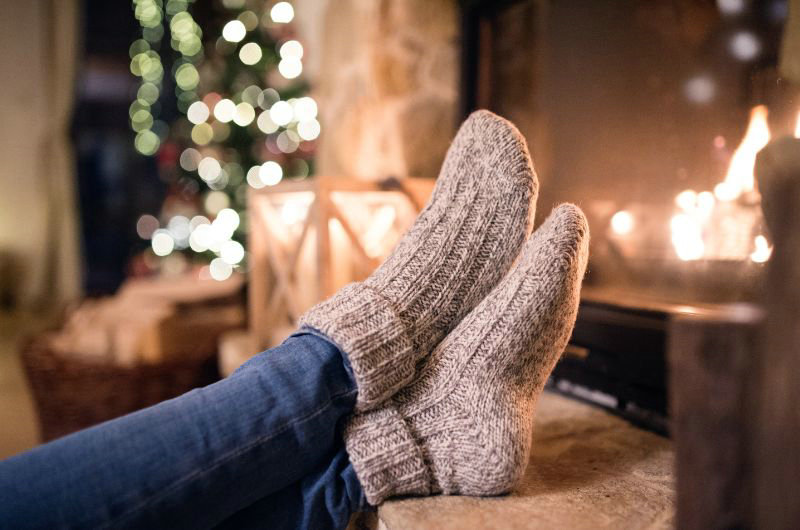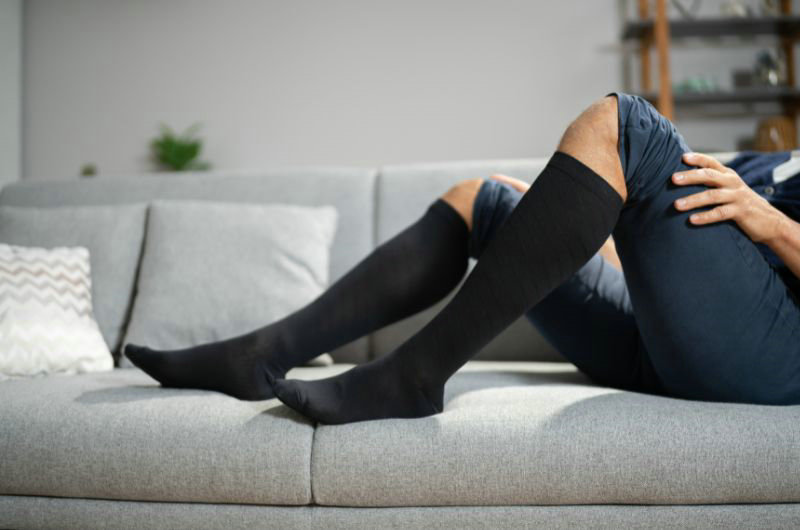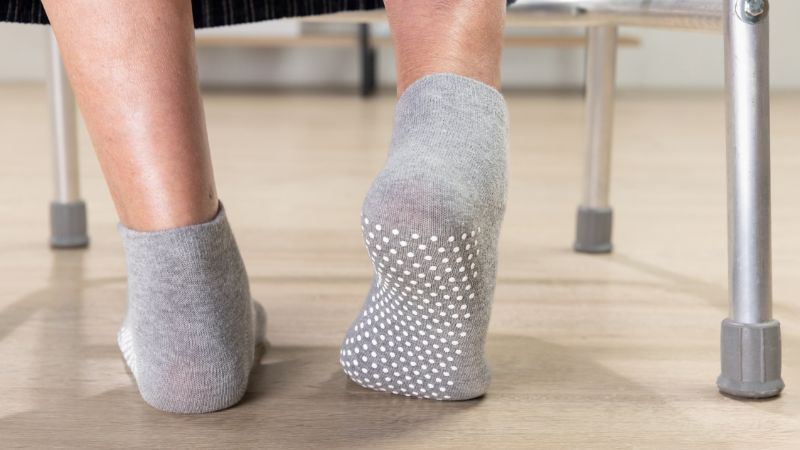
Overview Of Diabetes And Its Effects On Circulation
Diabetes affects your body’s ability to process blood sugar, leading to high levels of glucose in your bloodstream. This persistent high blood sugar damages blood vessels, impairing effective blood circulation. Over time, inadequate blood flow can result in complications, particularly in your feet, where poor circulation is a common concern.
Compromised blood vessels due to diabetes may lead to decreased oxygen and nutrient distribution, crucial for tissue health. You might notice swelling, often referred to as edema, as a clear indication of circulatory issues.
Let’s explore how diabetes links to such circulation problems:
- Blood flow: High glucose levels lead to inflammation and narrowing of your blood vessels, thus restricting flow.
- Swelling: When circulation is hampered, fluids can accumulate in your feet and legs, leading to discomfort.
- Feet: Reduced circulation makes your feet more susceptible to wounds and infections, as healing is slowed.
Proactive measures include regular monitoring of your blood sugar levels, maintaining an active lifestyle, and following medical advice. These steps are vital in managing diabetes and its impact on blood circulation.
Benefits of Compression Socks for Diabetics

Compression socks can offer you specific benefits if you have diabetes. They are designed to apply pressure to your lower legs, helping to maintain blood flow and reduce discomfort and swelling.
Improved Blood Circulation
One of the primary benefits of compression socks is improved blood circulation in the legs and feet. Diabetes can lead to poor circulation, which can increase the risk of complications such as foot ulcers and slow wound healing. Compression socks apply gentle pressure to the legs, promoting better blood flow from the legs back to the heart.
Reduced Swelling and Edema
People with diabetes are prone to swelling (edema) in the legs and feet due to fluid accumulation. Compression socks help reduce swelling by preventing fluid buildup and promoting better circulation. This can alleviate discomfort and improve mobility.
Minimized Risk of Blood Clots
Individuals with diabetes have an increased risk of developing blood clots, such as deep vein thrombosis (DVT). Compression socks can help prevent blood from pooling in the veins, reducing the risk of clot formation.
Alleviation of Leg Discomfort and Pain
Poor circulation in diabetics can lead to leg pain, cramping, and fatigue. Compression socks can help alleviate these symptoms by improving blood flow and reducing swelling.
Diabetic Neuropathy Relief
Compression socks may provide relief from the symptoms of diabetic neuropathy, such as tingling, numbness, and burning sensations in the legs and feet. By improving circulation, compression socks can help reduce discomfort associated with nerve damage.
Considerations for Diabetics Wearing Compression Socks

When considering compression socks, diabetics must carefully weigh the potential benefits against the risks associated with impaired circulation and neuropathy. The right pair can offer support and relief but choosing poorly may exacerbate common diabetic foot complications.
Proper Sizing And Fit
To avoid restricting blood flow and causing pressure points that could result in skin damage, it’s essential that you find compression socks that are the precise size and fit for your feet and legs. This is particularly important if you have diabetic neuropathy as you may not feel when socks are too tight, which can lead to further nerve damage or skin injuries.
- Measure your legs at their widest points to ensure the socks will not be too tight.
- Check for elastic bands at the top of the socks which should be secure but not constricting.
Compression Level Recommendations
Compression socks come in varying levels of pressure, measured in mmHg. For diabetics, mild compression is usually recommended, especially if you have neuropathy. It is crucial that you consult with your healthcare provider to determine the most appropriate level to support proper circulation without causing harm.
- Consult with healthcare providers to find your ideal compression level, often between 8-15 mmHg.
- Monitor your legs for signs of reduced circulation or discomfort, indicating that adjustments may be necessary.
Choosing Diabetic-Friendly Compression Socks
When selecting compression socks, opt for pairs specifically designed for diabetics, which typically feature non-elastic and minimal seams for maximum comfort. Socks should be made of moisture-wicking fabric to keep your feet dry and minimize the risk of fungal infections.
- Select socks without tight elastic bands which can impede circulation, a concern especially for those with diabetes.
- Look for seamless or minimally seamed socks to prevent rubbing and skin irritation that could lead to ulcers.
By keeping these considerations in mind, you can make informed choices that prioritize your foot health while still addressing your personal preference and fashion.
When to Avoid Compression Socks
While compression socks can be beneficial for many, there are specific situations where wearing them may not be safe if you have diabetes. It’s important to recognize these circumstances to avoid potential harm.
Severe Peripheral Arterial Disease (PAD)
If you’ve been diagnosed with severe peripheral arterial disease (PAD), compression socks may not be advisable. Wearing them can further obstruct blood flow in your already narrowed arteries. Before considering compression socks, consult with your doctor, as compromised blood flow can exacerbate foot complications.
Open Wounds Or Skin Infections
Should you have any open wounds or skin infections, it’s crucial to avoid compression socks. Their pressure could impede healing and increase the risk of a worse infection. It’s essential to allow these areas to heal and to maintain good hygiene to prevent fungal infections.
Neuropathy With Loss Of Sensation
In cases where neuropathy has led to a loss of sensation, wearing compression socks might be risky. Without the ability to feel pressure, numbness, tingling, or discomfort, you may not detect when the socks are too tight, possibly leading to swelling or worsening of foot complications. Always check with your healthcare professional to ensure that any foot care product is safe for your specific condition.
Sinoknit, Why Us?
Ningbo Sinoknit Co., Ltd. is a leading wholesale custom sock manufacturer located in Zhuji, China. Our headquarters is in Ningbo, one of China’s major ports. Since 2004, we’ve been specializing in producing various types of high-quality socks using cutting-edge materials such as 100% cotton, combed cotton, mercerized cotton, chemical fiber blended yarn, and lycra.
Our socks factory is equipped with over 300 computerized sock knitting machines imported from Italy and Korea. This allows us to produce up to 20 million pairs of socks per year. With an extensive range of over 100 sock varieties, we offer 96-needle, 108-needle, 120-needle, 132-needle, 144-needle, 168-needle, and 200-needle slim socks, terry socks, cotton-yarn socks, and woolen pants.
Sinoknit balances health benefits with personal style, making us a brand you can trust for your diabetic sock needs. Our focus is on your comfort and health, giving you the confidence to tackle daily activities with ease. Our products are exported to more than 20 countries and regions, including Korea, Japan, Southeast Asia, the Middle East, Europe, and North America. Trust us to provide you with the best wholesale socks for your needs.



